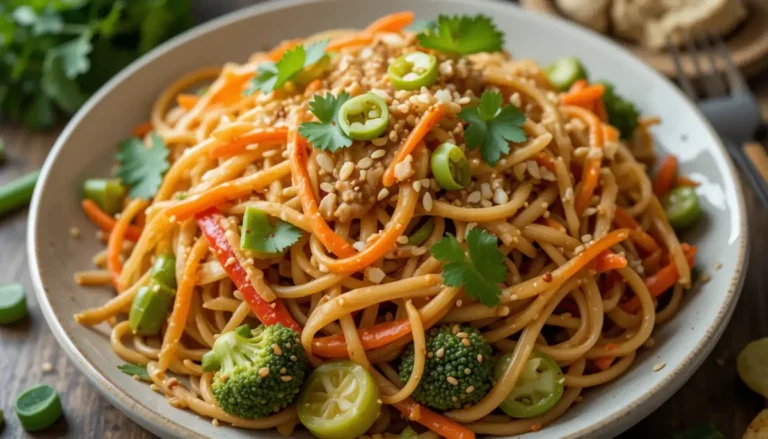Baba Ganoush Recipe Lebanese: A Delicious Middle Eastern Delight
Baba ganoush, a beloved Middle Eastern dip, is a staple in Lebanese cuisine. This creamy, smoky, and flavorful dish is made from roasted eggplants, tahini, garlic, and lemon juice. It’s a perfect accompaniment to pita bread, vegetables, or as part of a mezze platter. In this comprehensive guide, we will explore the history, ingredients, and step-by-step instructions to make the perfect baba ganoush recipe Lebanese style.
History of Baba Ganoush
Origins
Baba ganoush, also known as “mouhammara” in some regions, has a rich history that dates back centuries. The dish is believed to have originated in the Levant, a region that includes modern-day Lebanon, Syria, Jordan, and Palestine. The name “baba ganoush” translates to “pampered papa” or “spoiled father” in Arabic, which is a playful reference to the dish’s luxurious and comforting nature.
Cultural Significance
In Lebanese culture, baba ganoush is more than just a dip; it’s a symbol of hospitality and community. It is often served at family gatherings, festive occasions, and as a gesture of welcome to guests. The dish’s simplicity and versatility make it a favorite among both home cooks and professional chefs.
Ingredients
Main Ingredients

- Eggplants: The star of the show, eggplants are the primary ingredient in baba ganoush. They are roasted to perfection, giving the dish its signature smoky flavor.
- Tahini: A paste made from ground sesame seeds, tahini adds a rich, nutty flavor and creamy texture to the dip.
- Garlic: Fresh garlic cloves are essential for adding a pungent and aromatic flavor.
- Lemon Juice: Freshly squeezed lemon juice provides a tangy and refreshing element to balance the richness of the eggplant and tahini.
- Olive Oil: High-quality olive oil is used to enhance the flavors and add a silky smooth texture.
Optional Ingredients
- Parsley: Chopped fresh parsley can be used as a garnish to add a pop of color and a fresh herbaceous note.
- Pomegranate Molasses: A sweet and tangy syrup made from reduced pomegranate juice, pomegranate molasses can be drizzled over the dip for an extra layer of flavor.
- Sumac: A spice made from dried and ground sumac berries, sumac adds a lemony and slightly tart flavor.
Step-by-Step Instructions
Preparing the Eggplants
- Selecting the Eggplants: Choose medium-sized, firm, and smooth eggplants. Avoid any that are bruised or have soft spots.
- Roasting the Eggplants: Preheat your oven to 400°F (200°C). Pierce the eggplants several times with a fork to allow steam to escape. Place them on a baking sheet and roast for 30-40 minutes, or until the skin is charred and the flesh is soft.
- Peeling the Eggplants: Once the eggplants are cool enough to handle, peel off the skin. You can do this by hand or using a knife. Discard the skin and place the flesh in a bowl.

Making the Baba Ganoush Recipe Lebanese
- Mashing the Eggplants: Use a fork or a potato masher to mash the roasted eggplant flesh until it is smooth and creamy.
- Adding Tahini: Gradually stir in the tahini, mixing well to combine. The tahini should be well incorporated into the eggplant.
- Adding Garlic and Lemon Juice: Mince the garlic cloves and add them to the mixture. Squeeze in the lemon juice and mix thoroughly.
- Seasoning: Season the baba ganoush with salt and pepper to taste. You can also add a pinch of cumin or paprika for extra flavor.
- Adjusting the Consistency: If the mixture is too thick, you can thin it out with a little water or more tahini. If it’s too thin, you can add more eggplant or tahini.

Garnishing and Serving
- Garnishing: Transfer the baba ganoush to a serving bowl. Drizzle with olive oil and sprinkle with chopped parsley, pomegranate molasses, and sumac.
- Serving: Serve the baba ganoush with pita bread, vegetables, or as part of a mezze platter. It pairs well with other Middle Eastern dishes like hummus, tabbouleh, and falafel.

Variations and Tips
Variations
- Spicy Baba Ganoush: Add a pinch of red pepper flakes or a diced jalapeño pepper for a spicy kick.
- Herb-Infused Baba Ganoush: Mix in some chopped fresh herbs like cilantro, mint, or dill for a fresh and aromatic twist.
- Smoked Baba Ganoush: For an even smokier flavor, you can grill the eggplants instead of roasting them.
Tips
- Roasting the Eggplants: For the best smoky flavor, roast the eggplants over an open flame on a gas stove. This method will give the eggplants a more intense and charred flavor.
- Storing Baba Ganoush: Store the baba ganoush in an airtight container in the refrigerator for up to 5 days. It can also be frozen for up to 2 months.
- Serving Suggestions: Baba ganoush is versatile and can be used in various ways. Spread it on sandwiches, use it as a salad dressing, or mix it into pasta dishes.
Nutritional Information
Per Serving
- Calories: 120
- Fat: 10g
- Carbohydrates: 8g
- Fiber: 3g
- Protein: 2g
Health Benefits
- Rich in Antioxidants: Eggplants are high in antioxidants, which help protect the body against oxidative stress and inflammation.
- Heart-Healthy: Tahini is a good source of healthy fats, which can help lower cholesterol levels and reduce the risk of heart disease.
- Low in Calories: Baba ganoush is a low-calorie dish, making it a great option for those watching their weight.
Conclusion
Baba ganoush is a delicious and versatile Middle Eastern dip that is easy to make and packed with flavor. Whether you’re a seasoned cook or a beginner in the kitchen, this baba ganoush recipe Lebanese style is sure to become a favorite in your household. So, gather your ingredients, follow the steps, and enjoy the rich, smoky, and creamy goodness of baba ganoush.







